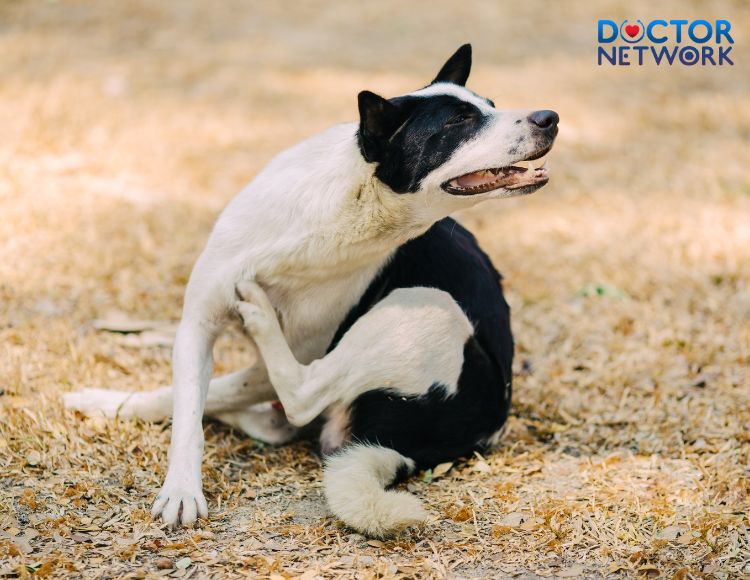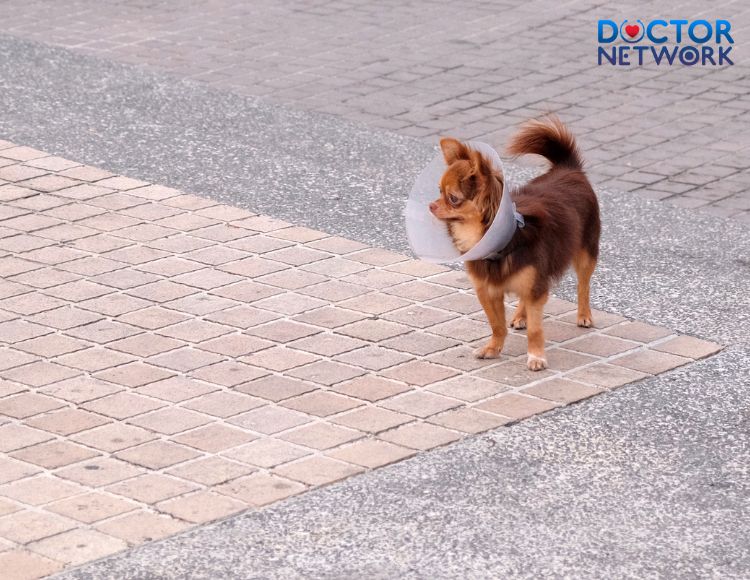A seemingly innocuous dog bite scratch on the leg can raise the question: “Is a minor dog bite scratch on the leg serious?“. While many may think such abrasions are minor, they can potentially lead to serious health complications if not properly treated. The risk of infection and rabies transmission necessitates immediate attention. This article will guide you through understanding the nature of dog bite scratches, essential first aid measures, recognizing signs of infection, and preventive strategies to safeguard against future incidents.
Understanding Dog Bite Scratches
What are dog bite scratches?
Dog bite scratches are superficial injuries caused by a canine’s teeth or claws breaking the skin surface. These lacerations range from shallow grazes to deeper abrasions, often occurring during play or confrontational encounters with dogs.
Why are dog bite scratches a concern?
Dog bite scratches pose significant health risks due to the potential for bacterial contamination and rabies transmission. The canine oral cavity harbors numerous microorganisms that can lead to severe infections if introduced into the human bloodstream.

Even if it’s just a small scratch, dog saliva can carry bacteria that cause infection.
Factors influencing seriousness
Several elements determine the gravity of a dog bite scratch:
- Depth and size of the wound
- Location of the injury (proximity to major blood vessels)
- Dog’s vaccination status and health history
- Victim’s age and immune system strength
- Time elapsed before treatment
| Factor | Low Risk | High Risk |
|---|---|---|
| Wound Depth | Superficial | Deep or puncture |
| Dog’s Status | Vaccinated, known | Unvaccinated, stray |
| Victim’s Age | Adult | Young child or elderly |
| Treatment Timing | Immediate | Delayed |
First Aid Steps for Dog Bite Scratches
Step 1: Clean the wound immediately
Thorough cleansing is paramount in preventing infection. Follow these steps:
- Wash your hands with soap and water
- Rinse the wound under running water for 5-10 minutes
- Use mild soap to gently clean around the injury
- Remove any visible debris or foreign matter
- Pat the area dry with a clean towel
Step 2: Apply antiseptic and cover the wound
After cleaning, protect the scratch from further contamination:
- Apply an over-the-counter antiseptic like povidone-iodine or hydrogen peroxide
- Cover the wound with a sterile adhesive bandage or gauze
- Change the dressing daily or when it becomes wet or dirty

Bandage the wound with clean gauze, change the bandage daily if bitten by a dog.
Step 3: Seek medical attention
Professional evaluation is crucial, especially for:
- Deep scratches or puncture wounds
- Bites from unfamiliar or unvaccinated dogs
- Signs of infection or excessive bleeding
- Injuries on the face, hands, or feet
A healthcare provider may prescribe antibiotics, update tetanus vaccination, or recommend rabies post-exposure prophylaxis if necessary.
Recognizing Signs of Infection
Vigilance in monitoring the wound is essential. Watch for these red flags:
Redness, Swelling, and Pain
Initial symptoms of infection include:
- Increased redness around the wound
- Swelling or warmth in the affected area
- Persistent or worsening pain
Pus, Fever, and Red Streaks
Advanced signs of infection demand immediate medical attention:
- Pus or foul-smelling discharge
- Fever or chills
- Red streaks extending from the wound
When to Seek Immediate Medical Attention
Don’t hesitate to visit the emergency room if you experience:
- Difficulty moving the affected limb
- Numbness or tingling sensations
- Signs of systemic infection (high fever, fatigue, body aches)
Rabies and Dog Bite Scratches
What is rabies?
Rabies is a deadly viral infection affecting the central nervous system, transmitted through the saliva of infected animals. While rare in domesticated dogs in many countries, the risk remains, especially with stray or wild animals.
Symptoms of rabies
Early symptoms include:
- Fever
- Headache
- General weakness
Later stages manifest as:
- Anxiety
- Confusion
- Agitation
- Hallucinations
- Hydrophobia (fear of water)
Importance of rabies vaccination
Preventive rabies vaccination for both humans and dogs is crucial in controlling this fatal disease. Regular pet vaccinations significantly reduce transmission risk.
When to seek rabies post-exposure treatment
Post-exposure prophylaxis (PEP) is recommended:
- After bites from unvaccinated or stray dogs
- If the dog’s behavior was unusual or aggressive
- In areas where rabies is prevalent
PEP should be initiated as soon as possible after exposure, ideally within 24 hours.
Preventing Future Dog Bite Scratches
Teach children about dog safety
Educate children on these fundamental rules:
- Always ask permission before petting a dog
- Never approach an unfamiliar dog
- Avoid disturbing dogs while they’re eating, sleeping, or caring for puppies

Children should be educated about how to behave safely around dogs.
Supervise children around dogs
Adult supervision is critical in preventing dog-related injuries. Never leave young children alone with dogs, even familiar ones.
Be mindful of dog behavior
Understanding canine body language can help prevent confrontations:
| Body Language | Meaning |
|---|---|
| Tail tucked, ears back | Fear or submission |
| Raised hackles, growling | Aggression or fear |
| Relaxed posture, wagging tail | Friendly, approachable |
Frequently asked questions about “Is a minor dog bite scratch on the leg serious?”
How long does it take for a dog bite scratch to heal?
Answer: The healing time for a dog bite scratch varies depending on its severity. Typically, a minor scratch may heal within 7-14 days. However, deeper scratches or those that become infected can take several weeks to heal completely. Factors influencing healing time include the location of the wound, the individual’s overall health, and how well the injury is cared for. It’s crucial to keep the wound clean, apply antibiotic ointment, and change dressings regularly to promote optimal healing.
Can you get rabies from a dog scratch without bleeding?
Answer: While the risk is lower compared to a bite, it is technically possible to contract rabies from a dog scratch, even without visible bleeding. The rabies virus is present in the saliva of infected animals. If an infected dog’s saliva comes into contact with a scratch or any break in the skin, transmission can occur. However, this scenario is rare, especially in countries where dog vaccinations are common. If you’re concerned about rabies exposure, consult a healthcare professional immediately to assess the need for post-exposure prophylaxis (PEP).
What should I do if my child gets scratched by a neighbor’s dog?
Answer: If your child is scratched by a neighbor’s dog, follow these steps:
- Clean the wound thoroughly with soap and water.
- Apply an antiseptic and cover the scratch with a clean bandage.
- Contact the dog’s owner to verify its vaccination status, particularly for rabies.
- Seek medical attention, especially if the scratch is deep or the dog’s health status is unknown.
- Document the incident, including photos of the wound and details about the dog.
- Monitor the wound for signs of infection, such as increased redness, swelling, or fever.
- Consider reporting the incident to local animal control if the dog seems aggressive or poorly managed.
- Is it necessary to get a tetanus shot after a dog scratch?
Answer: Whether a tetanus shot is necessary after a dog scratch depends on your vaccination history and the nature of the wound. Generally, if your tetanus vaccination is up to date (within the last 10 years), you may not need a booster. However, for deep or dirty wounds, or if your last tetanus shot was over 5 years ago, a healthcare provider might recommend a booster. Tetanus bacteria can enter through any break in the skin, so it’s always best to consult a medical professional after an animal-related injury to assess your individual risk and need for tetanus prophylaxis.
How can I tell if a dog scratch is infected?
Answer: To determine if a dog scratch is infected, look for these signs:
- Increased redness or swelling around the wound
- Warmth or tenderness in the affected area
- Pus or unusual discharge from the scratch
- Foul odor emanating from the wound
- Fever or chills
- Red streaks extending from the scratch
- Increased pain or throbbing sensation
- Swollen lymph nodes near the injury site
If you observe any of these symptoms, especially if they worsen over time, seek medical attention promptly. Early treatment of infections can prevent more serious complications and ensure proper healing of the dog scratch.
Conclusion
While minor dog bite scratches on the leg may seem trivial, they warrant serious attention due to potential health risks. By following the three crucial first aid steps – cleaning the wound, applying antiseptic, and seeking medical attention – you can significantly reduce the risk of complications. Remember, prevention is key. Educate yourself and others about dog safety, stay vigilant, and always prioritize prompt treatment for any animal-inflicted injury.
Take action now to protect yourself and your loved ones. If you’ve recently experienced a dog bite scratch, don’t hesitate to consult a healthcare professional. Your well-being is paramount, and timely intervention can make all the difference in ensuring a swift and complication-free recovery.
Scientific Researches about “Is a minor dog bite scratch on the leg serious?”
- “Bacteriology of dog bite wounds” by Talan et al., published in the New England Journal of Medicine (1999). This study examined the microbial flora in dog bite wounds and their implications for treatment.
- “Dog bites: still a problem?” by Gilchrist et al., published in Injury Prevention (2008). This research provided an epidemiological overview of dog bites and their public health impact.
- “Management of dog and cat bites” by Ellis and Ellis, published in American Family Physician (2014). This paper reviewed best practices for treating animal bites, including first aid steps.
- “Rabies post-exposure prophylaxis in routine practice in view of the new WHO guidelines” by Gautret et al., published in Vaccine (2010). This study examined the implementation of WHO guidelines for rabies prevention after animal bites.
- “Wound infections following animal bite injuries: risk factors and antibiotic prophylaxis” by Medeiros and Saconato, published in the Cochrane Database of Systematic Reviews (2001). This meta-analysis looked at factors influencing infection risk after animal bites.
Kiểm Duyệt Nội Dung
More than 10 years of marketing communications experience in the medical and health field.
Successfully deployed marketing communication activities, content development and social networking channels for hospital partners, clinics, doctors and medical professionals across the country.
More than 6 years of experience in organizing and producing leading prestigious medical programs in Vietnam, in collaboration with Ho Chi Minh City Television (HTV). Typical programs include Nhật Ký Blouse Trắng, Bác Sĩ Nói Gì, Alo Bác Sĩ Nghe, Nhật Ký Hạnh Phúc, Vui Khỏe Cùng Con, Bác Sỹ Mẹ, v.v.
Comprehensive cooperation with hundreds of hospitals and clinics, thousands of doctors and medical experts to join hands in building a medical content and service platform on the Doctor Network application.


























